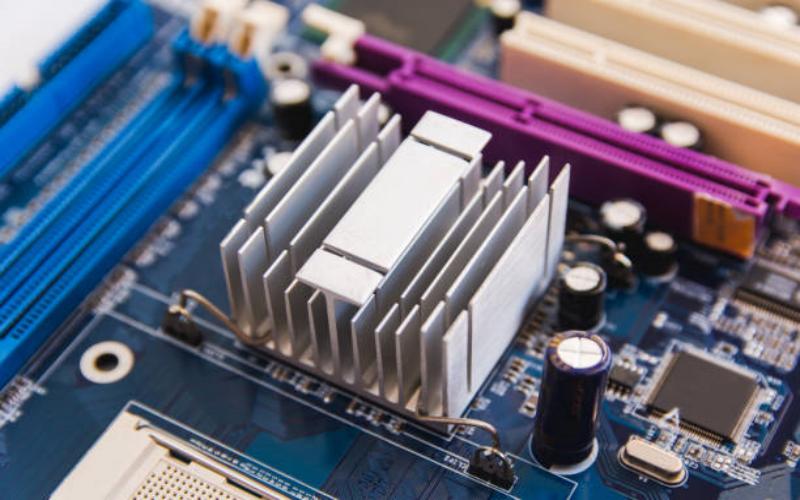Introduction:
A heat sink is an essential component in a computer that helps dissipate heat generated by the central processing unit (CPU) and other components. In this article, we will explore what a heat sink is, how it works, and its importance in maintaining the optimal performance and longevity of a computer system.
1. Understanding Heat Sink Basics:
A heat sink is a passive cooling device that is typically made of a metal, such as aluminum or copper, with a large surface area. Its purpose is to absorb and dissipate heat generated by electronic components, especially the CPU, which is often the most heat-intensive component in a computer system. The heat sink works in conjunction with a fan or other cooling mechanisms to regulate the temperature and prevent overheating.
2. Heat Transfer Mechanisms:
Heat transfer within a heat sink occurs through three main mechanisms: conduction, convection, and radiation. Conduction involves the direct transfer of heat from the CPU to the heat sink through physical contact. Convection refers to the transfer of heat from the heat sink to the surrounding air through the movement of air molecules. Radiation involves the emission of thermal energy in the form of electromagnetic waves.
3. Importance of Heat Dissipation:
Effective heat dissipation is crucial for maintaining the performance and stability of a computer system. Excessive heat can lead to thermal throttling, where the CPU reduces its clock speed to prevent overheating. This can result in decreased performance and sluggishness. Prolonged exposure to high temperatures can also cause permanent damage to the CPU and other sensitive electronic components.
4. Components of a Heat Sink:
A typical heat sink consists of several key components. The base, usually in direct contact with the CPU, helps transfer heat from the CPU to the heat sink. The fins or ridges increase the surface area of the heat sink, allowing for better heat dissipation. The heat pipes, often found in high-performance heat sinks, help distribute heat more efficiently within the heat sink.
5. Active vs. Passive Cooling:
Heat sinks can be categorized into two main types: active and passive. Active heat sinks utilize a fan or other cooling mechanisms to enhance heat dissipation. They are commonly found in high-performance gaming computers and servers. Passive heat sinks, on the other hand, rely solely on convection and radiation for heat dissipation. They are generally used in low-power or silent computing systems.
6. Overclocking and Heat Sinks:
Overclocking, the process of increasing the clock speed of a CPU beyond its stock settings, often leads to increased heat generation. This is because higher clock speeds require more power, resulting in more heat being produced. When overclocking, it is crucial to use an appropriate heat sink capable of handling the increased thermal load to prevent overheating and potential damage to the CPU.
7. Proper Installation and Maintenance:
To ensure optimal performance, it is essential to install the heat sink correctly. This involves applying a thin layer of thermal paste between the CPU and the heat sink to improve heat transfer. Additionally, regular cleaning and dust removal from the heat sink and fan are necessary to prevent dust accumulation, which can hinder heat dissipation.
8. Upgrading or Replacing a Heat Sink:
As computer components advance and become more powerful, the heat generated also increases. Upgrading or replacing a heat sink may be necessary to accommodate the higher thermal requirements. It is important to choose a heat sink that is compatible with the CPU socket and provides adequate cooling performance for the specific system requirements.
9. Alternative Cooling Solutions:
While heat sinks are the most common cooling solution for CPUs, alternative cooling methods, such as liquid cooling, have gained popularity. Liquid cooling systems use a combination of water or coolant and heat sinks to dissipate heat more effectively. These systems are often used in high-end gaming computers or systems with extreme overclocking.
10. Conclusion:
A heat sink plays a vital role in computer systems by dissipating heat generated by electronic components, particularly the CPU. Understanding how heat sinks work and their importance in regulating temperature is essential for maintaining optimal performance and preventing overheating-related issues. By choosing the right heat sink and ensuring proper installation and maintenance, computer users can ensure the longevity and reliability of their systems.

